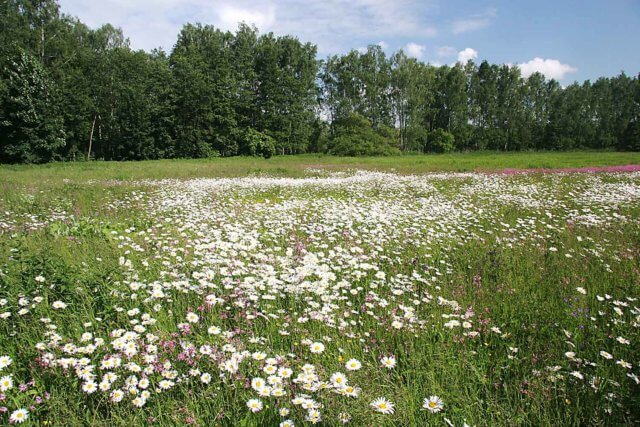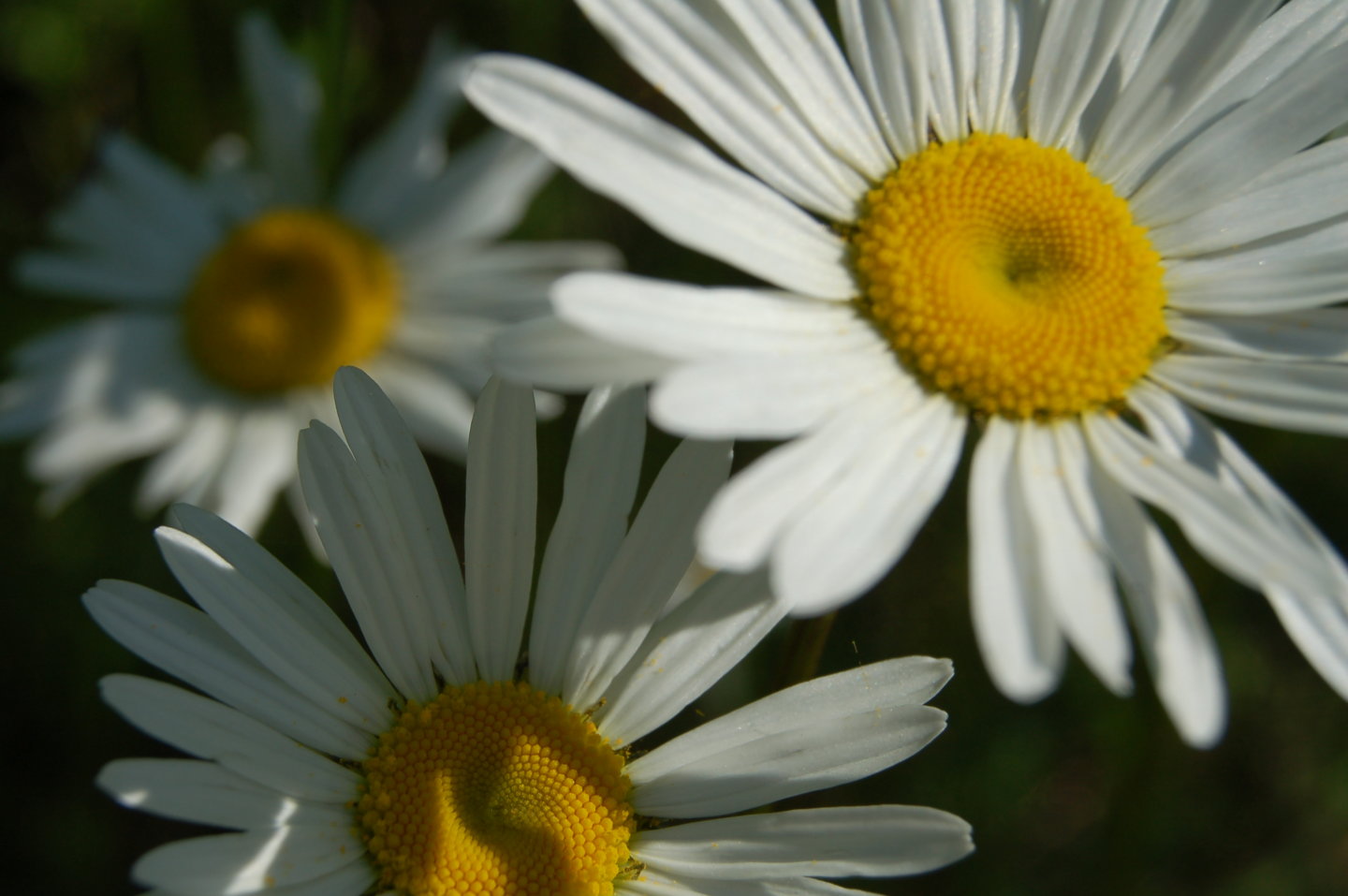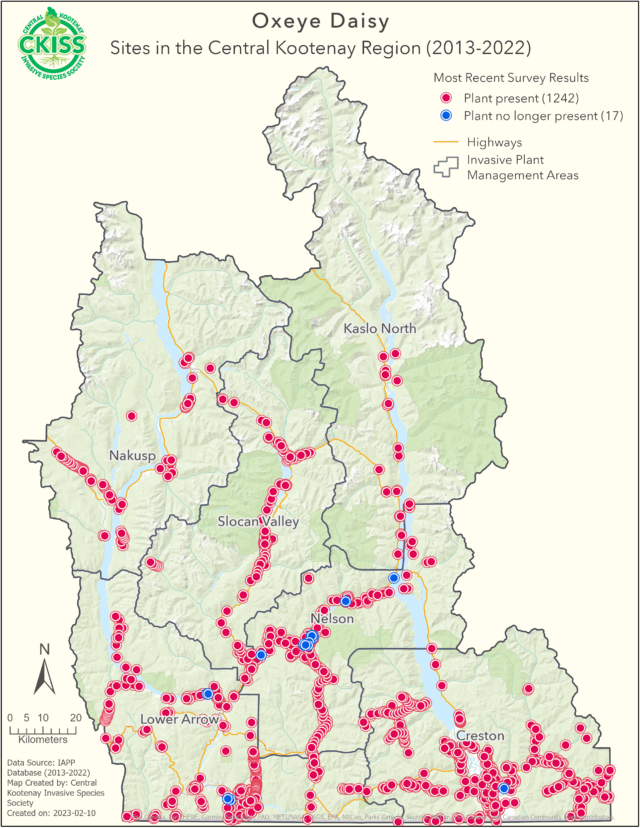Leucanthemum vulgare
Description
- A perennial that spreads via seeds and rhizomes
- Seeds are viable for up to 3 years in the soil.
- Establishes well in nutrient poor soil.
- Stems are smooth and grooved.
- Leaves are spoon-shaped with toothed edges.
- Upper leaves are alternately arranged.
- Flowers are white with a yellow center and can be up to 5cm in diameter.
- Petals are slightly notched at the tip.
Consequences of invasion

- Oxeye daisy decreases the available forage for cattle and wildlife because of its bitter taste
- Dense infestations decrease native plant diversity.
Status in the CKISS region
- Oxeye daisy has become widespread in the CKISS region, and its management priority is classified as Strategic Control on the CKISS Annual Priority List.
- While it is not realistic to eradicate this species at the landscape level, this species may be treated at high priority sites (e.g. wildlife habitat, corridors of spread, adjacent to agricultural land, restoration sites, etc.) based on specific land management objectives.
- To learn more about how CKISS classifies and manages invasive species, see our Invasive Species Priority Lists page.
Integrated pest management options
Prevention
- Be PlantWise and use Grow Me Instead to plant non-invasive alternatives to oxeye daisy
- Check the species contained in wildflower seed mixes to ensure invasive species aren’t included.
Treatment
- Repeated mowing and hand pulling is effective but should be done prior to seed production
- Repeated grazing by sheep or goats may help to reduce populations
- Properly dispose of invasive plant materials. Read our In the Garden page for more information
- Treatments should be repeated annually due to the long life of the oxeye daisy’s seeds
- Chemical treatments are available, consult a professional to discuss whether this might be suitable for you.


